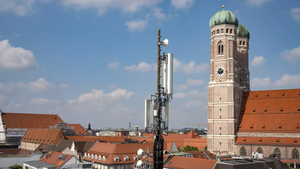October 29, 2015

For me, the big question around the Internet of Things wasn't whether it was going to happen -- it seems inevitable even if it's arriving more slowly than expected -- it was how the big network operators planned to cash in, and how the business models would evolve.
Massive connectivity is one obvious source of revenue, but millions of tiny connections would require their own pricing and delivery mechanisms, so once you got past the big players -- car companies, manufacturing and healthcare -- it isn't clear to me how the rest of the market evolves in a way that puts the operator in the best position to reap rewards.
And, as it turns out, connectivity isn't the big money-maker from Verizon Communications Inc. (NYSE: VZ)'s perspective at all. (See Verizon Makes Major IoT Push.)
In the wake of Verizon's big IoT news, ThingSpace, Mark Bartolomeo, the carrier's vice president of Internet of Things Connected Solutions, tells me Verizon is more interested in playing above that layer. To that end, its ThingSpace IoT development platform is designed to work with Verizon's LTE network but also with WiFi and Zigbee connections and even a carrier-neutral approach, he says.
So where does Verizon make money on ThingSpace, the new IoT core network it promises to deliver in 2016 and the new data analytics capabilities it is promising to share?
Bartolomeo's answer was reasonably detailed and a little complex. Here's how it breaks down:
Apps and service developers eventually pay, if they succeed.
The developer community and entrepreneurs can access the Verizon ThingSpace platform for free and be assigned to a developer sandbox. "They would be able to access the APIs [application programming interfaces] and to embed those APIs that would manage devices, create alerts, suspend devices, capture information, etc., into the application they develop," Bartolomeo explains. "We are going to provide that to them free, but when they commercialize the app and push that out into the market, we will make our money as that application is making API calls into the ThinkSpace platform."
There are different pricing models for those API calls -- some developers will buy in bulk and others on a per-usage model -- but enabling a lot of applications builds that revenue model.
The example Bartolomeo cites is of an app developer who developed an alert system he wants to market to landlords in New York City high-rises. It would allow the landlords to offer tenants a service to tell them when a desired asset -- washer, dryer or treadmill, for example -- is available. Development was free but once it is deployed, the API calls mount up and Verizon cashes in.
Follow IoT trends from around the globe in the IoT section here on Light Reading.
The platform can help get Verizon in the door earlier as industrial and commercial IoT is in the design phase.
Companies such as General Motors and 3M Corporation are designing today what they will be selling three or four years from now, he says. So they are looking right now to design IoT communications management into those future products.
"They have been working historically with companies like Renesas Electronics (now a ThingSpace partner), which has the largest micro-controller maker in the world," Bartolomeo says. "And our relationship with Renasas is going to engage us at the design phase, so as it is coming through design and manufacturing and things like wide area communications, cellular connectivity and security are being built into that device; we are engaged."
Prior to this, as a network carrier and a transaction-based business, Verizon didn't have that visibility, he notes, and wasn't involved until the end of the process.
Verizon can help software application companies integrate, market and distribute their products.
There are many such companies today that do things like smart lighting, intelligent traffic management and other video-monitoring apps, he notes, but they are being delivered as separate products on different platforms, in a way that isn't sustainable or profitable.
"So we would work with them to onboard them onto the ThingSpace platform, and then we provide marketing, distribution and access to the marketplace through our sales organization, and we capture revenue-share at that application layer," he says. Municipalities and businesses will be more attractive to a unified product on a single platform.
Other companies will integrate their IoT platforms into ThingSpace for its communications and security APIs and Verizon's data analytics.
Renesas Electronics Corp. (Tokyo: 6723) and Intel Corp. (Nasdaq: INTC), both of which participated in the ThingSpace rollout event, are two examples but there are more, Bartolomeo says, and Verizon can leverage those partnerships as well, as it does software developers, for additional sources of revenue.
Data analytics will provide a revenue stream, and trigger professional services engagements as well.
Analytics are required to make actionable the vast amount of data generated by IoT sensors and devices, but what's more interesting is the ability to federate that data with other information, he says.
Hahn Family Wines, which also participated in the ThingSpace launch, is a good example of that, according to Bartolomeo. Being able to monitor soil moisture and temperature and track weather is helpful, but if that data could be federated with historical weather patterns and National Oceanic and Atmospheric Administration data to detect trends and predict outcomes, it becomes even more valuable.
And finally, there is, of course, massive connectivity to Verizon's 4G LTE network, something the carrier is enabling by creating an IoT core to handle this type of traffic more efficiently and by using lower-cost chipsets for devices and sensors than are used today in smartphones.
Connecting all those devices will generate more dollars but a strong sign of Verizon's determination to play above the connectivity layer is the fact the carrier is integrating WiFi and Zigbee wireless connections and even carrier-neutral options into its platform, Bartolomeo adds.
— Carol Wilson, Editor-at-Large, Light Reading
You May Also Like










